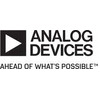Manufacturer Part Number
AD807A-155BRRL7
Manufacturer
Analog Devices
Introduction
The AD807A-155BRRL7 is a high-performance receiver designed for SDH/SONET applications by Analog Devices.
Product Features and Performance
Specifically built for SDH/SONET protocols.
Features a single receiver (0/1 Drivers/Receivers).
Operates within a voltage supply range of 4.5V to 5.5V.
Designed to function optimally in harsh conditions, with an operating temperature range of -40°C to 85°C.
Surface Mount technology for secure and efficient mounting.
Product Advantages
Exceptional reliability and performance for high-speed communication applications.
Suitable for a broad range of temperatures, enhancing its versatility across different environments.
The compact 16-SOIC package allows for efficient usage of circuit board space.
Key Technical Parameters
Voltage Supply: 4.5V ~ 5.5V
Operating Temperature: -40°C ~ 85°C
Mounting Type: Surface Mount
Package/Case: 16-SOIC
Protocol Compatibility: SDH/SONET
Quality and Safety Features
Complies with standard safety and operational guidelines for communication components.
Engineered for durability and long-term performance.
Compatibility
Primarily designed for SDH/SONET protocols, ensuring seamless integration with corresponding systems.
Application Areas
Used in telecommunication infrastructures for reliable data receipt.
Ideal for high-speed internet services, completing telecom networks.
Product Lifecycle
Marked as Obsolete, indicating that it is nearing the end of its production life.
Replacement models or upgrades may be available, catering to newer standards or technologies.
Several Key Reasons to Choose This Product
High reliability under a wide temperature range makes it suitable for varied environmental conditions.
Compatibility with SDH/SONET protocols ensures it meets specialized telecommunication requirements.
The compact and efficient design aids in minimizing space usage on PCBs, facilitating easier design implementations.
Though obsolete, its proven performance in existing applications may still offer value in specific legacy systems or as a reference design for developing newer solutions.


 AD8079ARZ-REEL7Analog Devices
AD8079ARZ-REEL7Analog Devices AD8091ART-R2Analog Devices Inc.IC OPAMP VF R-R LDIST LP SOT23-5
AD8091ART-R2Analog Devices Inc.IC OPAMP VF R-R LDIST LP SOT23-5 AD8079BRZ-REEL7Analog Devices Inc.IC BUFFER 2 CIRCUIT 8SOIC
AD8079BRZ-REEL7Analog Devices Inc.IC BUFFER 2 CIRCUIT 8SOIC AD8091ARAnalog Devices Inc.IC OPAMP VF R-R LDIST LP 8SOIC
AD8091ARAnalog Devices Inc.IC OPAMP VF R-R LDIST LP 8SOIC AD8075ARUZ-REEL7Analog Devices Inc.IC AMP BUFFER 16TSSOP
AD8075ARUZ-REEL7Analog Devices Inc.IC AMP BUFFER 16TSSOP AD8091
AD8091